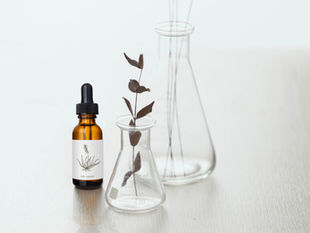
Covid Vaccine Detox & Injury Protocol: A Practical Guide to Regaining Your Health
0
10
0
Covid Vaccine Protocol: A Summary
Clinical Rationale for SARS-CoV-2 Base Spike Protein Detoxification in Post COVID-19 and Vaccine Injury Syndromes
Journal of American Physicians and Surgeons Volume 28 Number 3 Fall 2023
Authors: Peter A. McCullough, M.D., M.P.H., Cade Wynn, Brian C. Procter, M.D.
Overview
The global population has largely been exposed to the SARS-CoV-2 virus either through infection or vaccination, leading to widespread exposure to the spike protein, which has been implicated in various post-COVID-19 and vaccine injury syndromes. This summary outlines a daily protocol to detoxify the spike protein, focusing on its degradation and antagonizing its effects in tissues and organs.
Why Detoxify the Spike Protein?
The spike protein is responsible for the pathogenicity of SARS-CoV-2, contributing to inflammation, thrombosis, and organ injury. Post-infection and post-vaccination, the spike protein can persist in tissues for months, inciting chronic symptoms. Addressing residual spike protein is thus crucial in mitigating post-COVID-19 and vaccine injury syndromes.
Daily Protocol Highlights
Nattokinase (2,000 FU twice daily)
Function: Nattokinase is a proteolytic enzyme with thrombolytic properties, derived from fermented soybeans (Bacillus subtilis natto). It is a naturally occurring enzyme that aids in the degradation of the spike protein and enhances fibrinolysis, thus promoting the clearance of spike protein from the body.
Clinical Evidence: Studies have shown nattokinase can degrade the spike protein and inhibit viral infections in preclinical models. It is considered safe, with the main precaution being the risk of bleeding, especially when taken with anticoagulant medications.
Bromelain (500 mg daily)
Function: Bromelain, a protease from pineapple stems (Ananas comosus), is a naturally occurring enzyme with anti-inflammatory, immunomodulatory, and anticoagulant effects. It inhibits key inflammatory mediators and promotes fibrinolysis, reducing the burden of the spike protein.
Clinical Evidence: Bromelain has been shown to inhibit SARS-CoV-2 infection and degrade the spike protein in vitro. It is generally safe but may cause gastrointestinal upset and allergic reactions in individuals with soy allergies.
Curcumin (500 mg twice daily)
Function: Curcumin, derived from turmeric (Curcuma longa), is a naturally occurring polyphenol that modulates inflammation and has antiviral properties. It inhibits cytokine production, ACE activity, and promotes anticoagulation, reducing the impact of spike protein-mediated injury.
Clinical Evidence: Curcumin has demonstrated efficacy in reducing inflammatory markers and inhibiting SARS-CoV-2 entry into cells. Nanoparticle or liposomal formulations enhance its absorption, making it more effective.
Implementation and Monitoring
Duration: This protocol is suggested for at least three months, with potential continuation for a year or more, depending on individual response and symptom resolution.
Monitoring: Regular clinical and laboratory monitoring is recommended to assess treatment response and manage potential adverse effects. Key tests include hs-CRP, D-dimer, and spike protein antibody levels.
Precautions: Patients should be monitored for bleeding complications and gastrointestinal issues. Medical supervision is advised, especially when combining these supplements with other medications.
Conclusion
This triad of nattokinase, bromelain, and curcumin offers a potential strategy for detoxifying the spike protein and alleviating post-COVID-19 and vaccine-related symptoms. While promising, these interventions require careful monitoring and further clinical validation through randomized controlled trials.
Source: McCullough, P. A., Wynn, C., Procter, B. C. (2023). "Clinical Rationale for SARS-CoV-2 Base Spike Protein Detoxification in Post COVID-19 and Vaccine Injury Syndromes." Journal of American Physicians and Surgeons, 28(3), 90-93.






